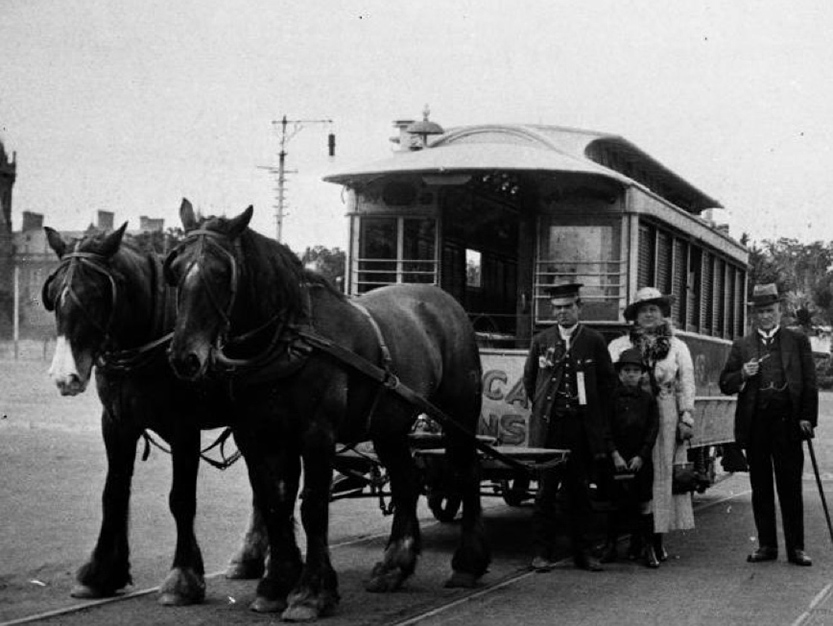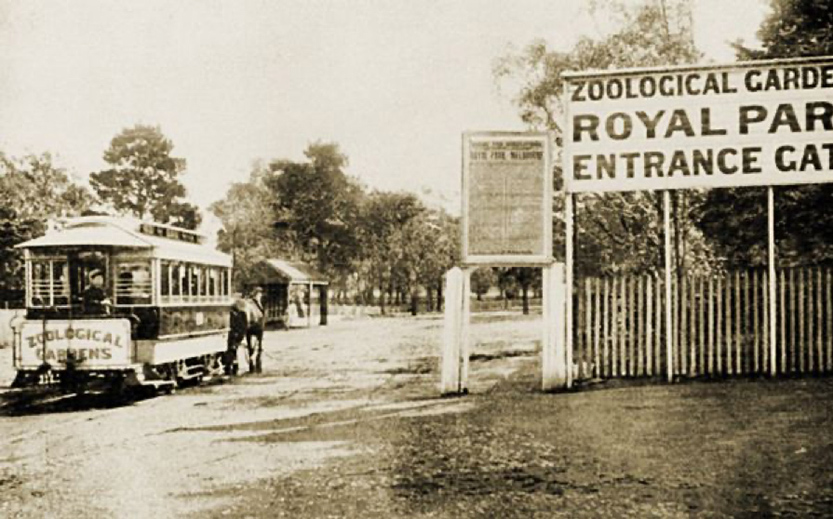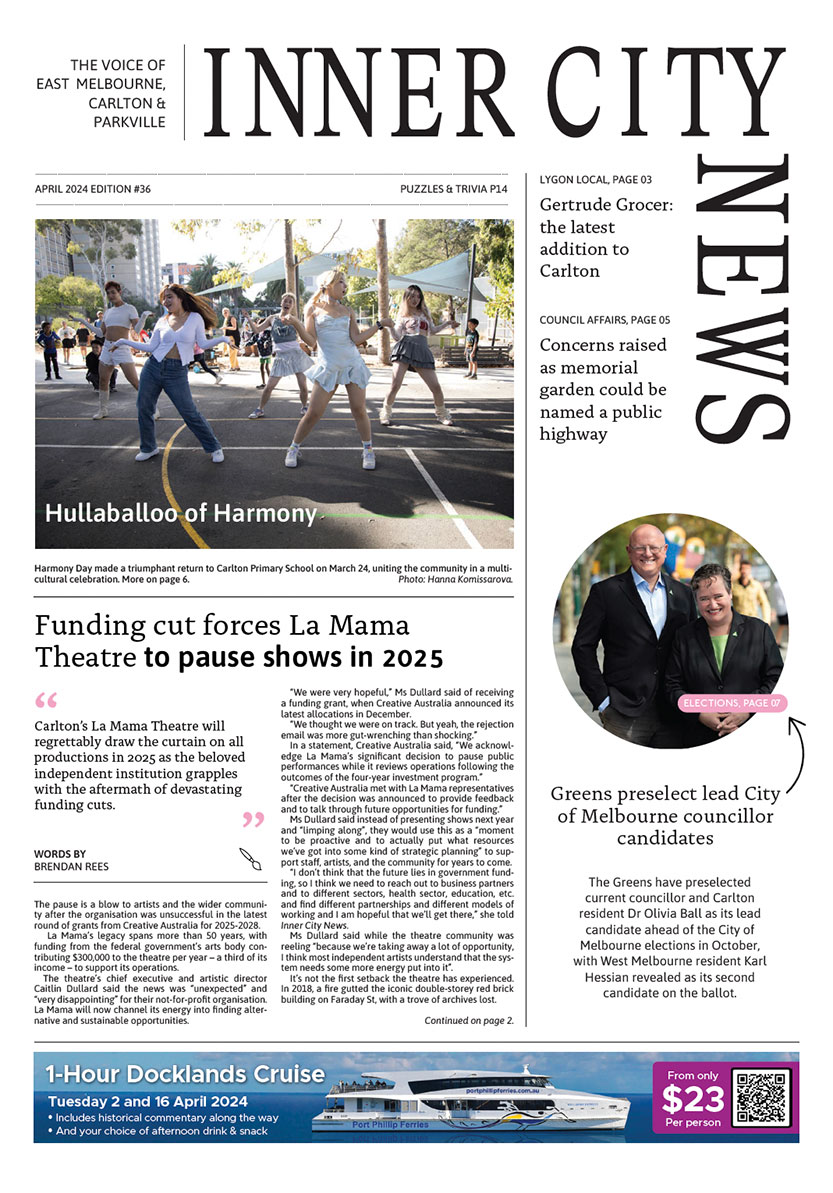Horse-drawn trams in Royal Park
Melbourne’s first trams were not powered by electricity, or by a cable, but by horses. There were in the early days a number of horse tram routes in Melbourne, including one that ran through Royal Park to the entrance of the Zoo.
The key difference between a tram and other public transport vehicles that ran on the road was that a tram had metal wheels that ran on metal rails set in the road, and this gave it a smoother ride than vehicles that ran on Melbourne’s rough road surfaces. Trams were also able to haul a greater load of passengers, due to the lower rolling resistance of metal wheel on steel rail.
However, horse trams had their drawbacks as the horses left in their wake an unwelcome trail of manure and urine, which contributed to the distinctive odour of Melbourne’s streets in those days. Also, horses had to be fed even when they were not earning revenue, and that cost money.
Melbourne in the late 19th and early 20th centuries had seven horse-drawn tram routes, operated by a number of companies in different parts of the city. The first of these, and indeed the first tram line of any type in Melbourne, opened in December 1884 and carried passengers from Fairfield Railway Station to a real estate development in Thornbury known as Fairfield Park. However, by 1890 this line was closed, leaving those who had purchased land in this development totally without public transport.
Another notable horse tram route was one that ran through Royal Park to the Zoological Gardens. Opened in March 1890, it ran over a short one-kilometre route from the corner of Royal Parade and Gatehouse St through Royal Park to the entrance of the zoo. The carriage shed and stables were adjacent to the zoo entrance.
Passengers sat inside an enclosed carriage, while the driver stood on a hooded platform at the front of the carriage holding the horses’ reins. There were no conductors, so the driver had to collect the fares as well as drive the two-horse team. At each terminus, he had to unhitch the horses, lead them from one end of the carriage to the other, and hitch them up again, so that the tram could return along the route it had just taken.
When the Melbourne and Metropolitan Tramways Board was formed in 1919 to run Melbourne’s tram system, the zoo line was the only horse-drawn route still in operation, and as such faced an uncertain future. The costs of operating horses were rapidly increasing, so in that same year one of the carriages was fitted with a petrol engine. However, the experiment was not a success, and the line continued to depend on horses.
The route was commercially successful, but during the Victoria Police strike in November 1923 the sheds and stables were burnt to the ground by rioters and the trams destroyed. All the horses managed to escape. But the route was never reopened. It is difficult to say whether the line would have survived the economic depression of the 1930s, but if it had, it surely would have become one of Melbourne’s most popular attractions •

Carlton language school championed by Ukrainian refugee





 Download the Latest Edition
Download the Latest Edition